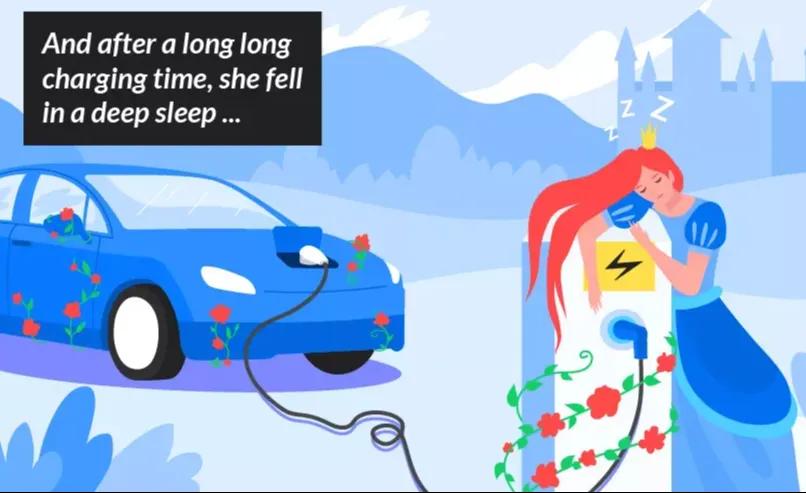Once upon a time...there was a cumbersome and slow charging process!
An average car is only in operation for a good three-quarters of an hour on any given day. This corresponds to about three percent of the 24 hours of a day. Except for longer holiday trips, the vehicle covers an average of only 30 kilometres. Even a large and heavy electric car only needs a good 7 kWh of electricity for this. Even with a charging capacity of only 3.7 kilowatts, which is possible via a conventional domestic power outlet, this energy would be recharged in about two hours. This time should be easy to find in the 23 hours that a vehicle is parked anyway.
Relaxed charging at home
A survey of more than 400 e-car users conducted by the Karlsruhe Fraunhofer Institute for Systems and Innovation Research (ISI) supports the thesis of the popularity of relaxed charging at home. Nearly 80 percent of the users also have a fixed parking space on their own residential property with an easily usable charging facility. This corresponds to the majority of respondents charging their cars at home, a quarter also use charging stations at work. Car manufacturers, TÜV and the electrical trade recommend a charging station (wallbox) instead of a domestic power outlet which is not designed for permanent loads. This is also often promoted.
Charging at home gives e-car drivers another advantage: they save time, which is a valuable commodity for many. The drive to the petrol station, possibly with a detour, the search for and waiting for a free petrol pump, the filling and payment process; ten to 15 minutes are quickly added up with a conventional combustion engine. Reaching for the charging cable and plugging it into the wallbox, on the other hand, takes only a few seconds. A pleasant side-effect is that the nuisance from pollution and odor caused by petrol and diesel is also eliminated.
